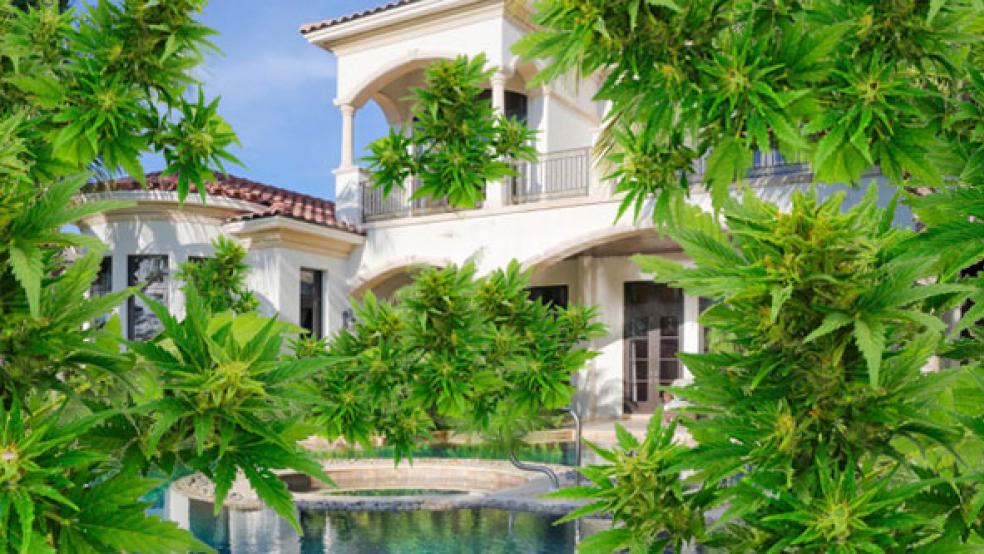Forget the wine boom of the 1990s. California’s biggest cash crop — and one of the fastest growing small businesses in the state — is now its $14 billion marijuana harvest. But you won’t find this pot of gold blowin’ in the wind. Instead, it’s blooming in bankruptcy as foreclosures and other rentals are transformed into indoor, grassroots farms.
Pot farms — located in California neighborhoods low and high, including my own — jeopardize safety and property values because of related gang violence and fires, the latter caused by the hot lights and rigged wiring used by indoor growers.
Yet interestingly enough, most of their neighbors never know these ganja greenhouses are there, and many don’t report them. The Drug Enforcement Administration raided 850 indoor grow houses in California last year — the largest number of any single state and a huge chunk of the 4,666 busted nationally — but narcotics officers say it’s just a tiny fraction of the total grow houses operating here.
Indeed, it has become such a big business that law makers here have proposed a first-of-its-kind initiative for November’s ballot that would decriminalize pot and tax its sales to fill empty city coffers.
Gar-ganga Profits
For the pot farmers operating these grow houses, says Ron Brooks, president of the National Narcotic Officers Association’s Coalition, it’s a windfall. Here’s the math: A good indoor pot farmer can get about a pound per harvest from each plant, which can fetch about $3,000 from a dispensary, or more on the black market, Brooks says. The really competent growers, he says, can pull off as many as three harvests a year from the same plants. But let’s say you only get two: With only 50 plants, you’d gross $300,000, considerably more than the cost of rent, plants, fertilizer, and grow lamps. (Most illegal growers are bypassing the meter and getting their electric for free.) And, of course, the money is tax free — at least for now.
“You’re talking a lot of money, for not a lot of investment,” Brooks says. “And the risk is minimal compared to other illegal enterprises.”
The Farm on My Street
The three-story Mediterranean McMansion and grow house just up the street in my Los Angeles neighborhood went undetected by myself and other neighbors for more than six months.
Eventually, the house was raided and $400,000 worth of pot was seized, according to the narcotics officer making the bust. The lessees never came back and no arrests were made.
We were lucky. Many grow houses are busted when the fire department rushes out to douse an electrical fire, sparked by the grow lights or faulty wiring — a tactic used to save money and hide their efforts from police. Our little community pot farm with its hijacked electricity could have set our hillside aflame.
Or, we could have been subject to the gang violence that often surrounds these houses, as shootings break out over an attempted theft, or — heaven forbid — a rival faction mixes up the address and confronts a neighbor.
For the landlord down the street, however, it’s totally a money-losing proposition. The leasing firm that rented to these growers says there is about $150,000 worth of damage to the relatively new house; including ruined walls and floors, as growers hacked into walls and ceilings for irrigation and ventilation, and rained water and pesticides over just about every surface.
Not exactly a victimless crime, eh?




